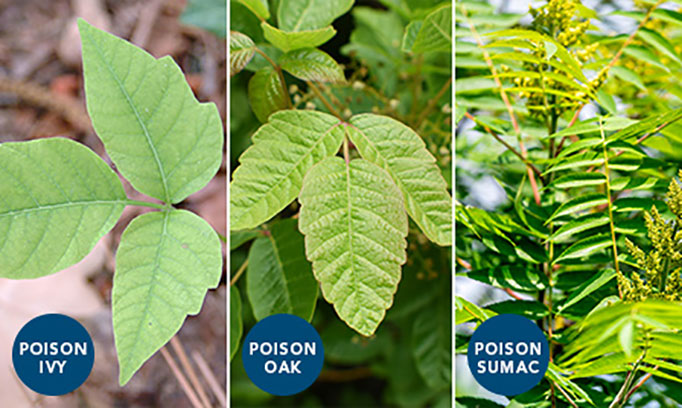Farmers market finds: Kohlrabi
Posted May 11, 2017
Kohlrabi is a common vegetable you'll spot at early spring farmers markets. But, just what is this bulbous odd looking vegetable and how do you eat it?
Continue reading this article
HEAL
Posted June 10, 2024
A quick way to cut a camping trip short is by getting a poison ivy, oak or sumac rash. The three relatives have one irritating trait in common: urushiol. Urushiol is the oily chemical carried by some plants, causing painful rashes, blisters, bumps and an unbearable itch. Before you explore the outdoors, there are a few things you can do to prevent, recognize and treat poison ivy, oak or sumac rash.
Symptoms of poison ivy rash might not crop up right away, and it may take between 12 and 72 hours to experience a reaction. The most common poison ivy rash symptoms are:
Avoidance is your best defense. Make sure you, family members and children know what to look for and steer clear. Here’s how to recognize and prevent poison ivy.
These pesky plants can be found everywhere, making it important to know which ones to avoid.
Whenever possible, stick to brush-free trails and keep your distance from:

Some adventurers take the trail less traveled. If that describes you, wear temperature-appropriate clothes that cover your skin, such as long socks, long-sleeved shirts, pants, gloves and a face covering.
Up to 85 percent of people have an allergic reaction from exposure to urushiol. If you get some on your skin, immediately wash with gentle dish soap and lukewarm water or rubbing alcohol within 30 minutes. Don’t use hot water, as it will open your pores and spread urushiol to other parts of your body.
Thoroughly wash any unprotected skin, clothes and other items immediately after exposure to plants containing urushiol. The oil can easily transfer to clothing and be potent for years later. Wear rubber gloves and toss potentially exposed clothes into the washing machine using hot water and the longest cycle possible.
It’s also wise to wash your shoes, gardening tools, tent stakes and other contaminated objects as soon as possible to prevent future spread. The same goes for your pet; using rubber gloves, wash your pet as you typically would, and toss the towels you dried Fido with into the washing machine.
Urushiol rash can quickly expand to other areas of your body and leave a scar if you scratch affected areas. Itching or breaking open blisters can also lead to infection from the bacteria on your hands.
Poison ivy blisters can break naturally, but the fluid in the blisters won’t cause the rash to spread. Fortunately, you can’t spread poison ivy rash to others. Only people who come in direct contact with urushiol will experience a reaction.
A rash caused by urushiol usually lasts one to three weeks and often goes away on its own. Try these over-the-counter poison ivy treatments to ease your symptoms:
Severe reactions may require a prescription, like a steroid ointment. Allina Health Virtual Care is a convenient online option for getting prescription treatment for poison ivy rash—no matter where you are.
Online visits offer 24-hour access and are especially convenient if symptoms start after clinic hours, over the weekend or while you're away from home.
You can usually treat poison ivy, oak and sumac from home without seeing a provider. However, some severe rashes may require medical attention or emergency care.
See your provider in non-emergency situations if:
Visit the closest emergency room if you have a serious allergic reaction, experience severe swelling or have difficulty breathing or swallowing.
Connect to the right care
Get care nowDo an online visit
Start a visitPosted May 11, 2017
Kohlrabi is a common vegetable you'll spot at early spring farmers markets. But, just what is this bulbous odd looking vegetable and how do you eat it?
Continue reading this articleGet fun, inspiring, provider-reviewed articles sent to your inbox.
Sign up for our email newsletter